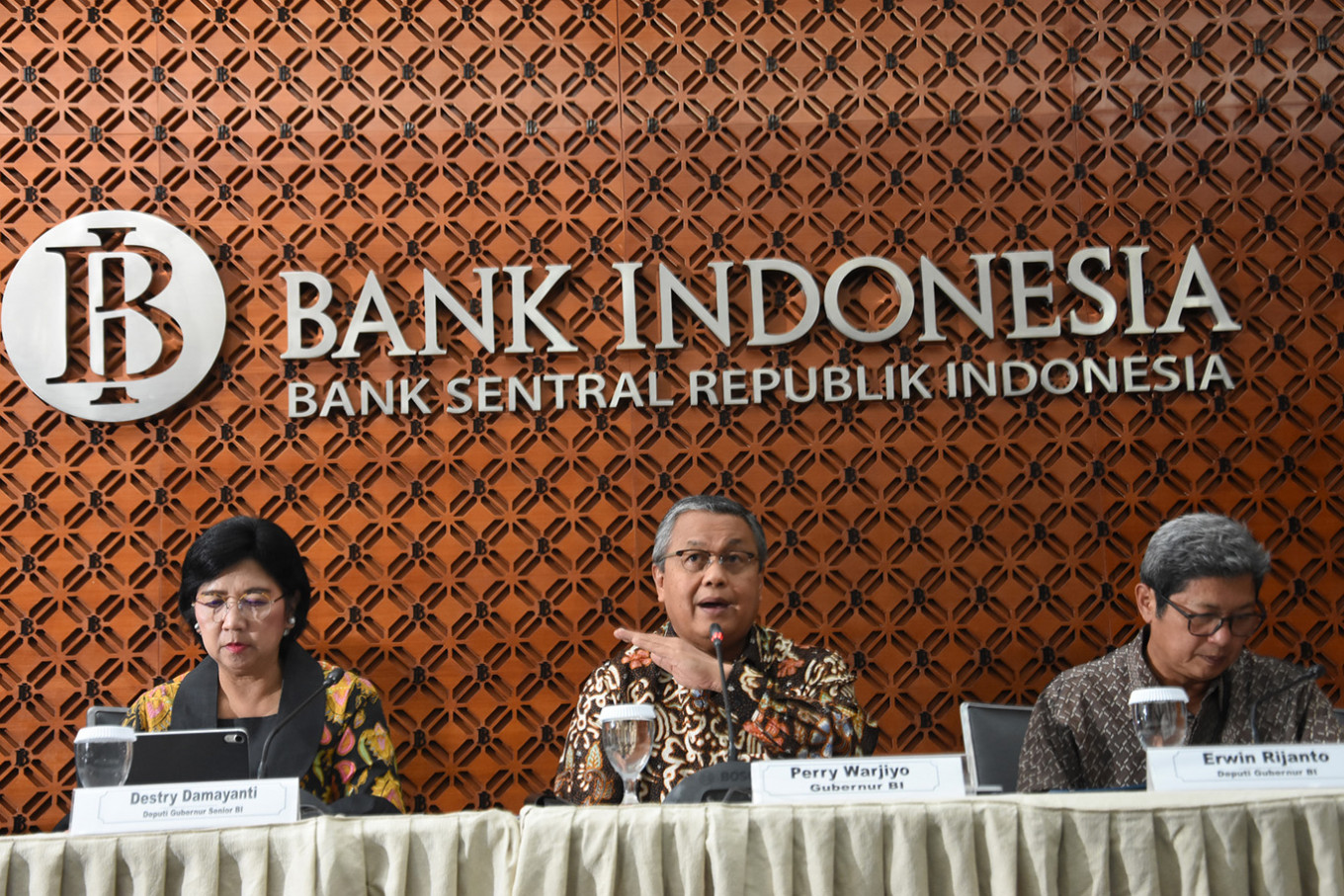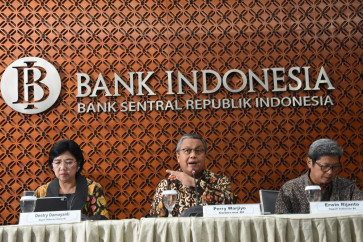Popular Reads
Top Results
Can't find what you're looking for?
View all search resultsPopular Reads
Top Results
Can't find what you're looking for?
View all search resultsIDX, BI cushion virus-battered financial markets as investors dump Indonesian assets
Last week, foreign investors sold a net Rp 33.6 trillion ($2.36 billion) in both Indonesian stocks and bonds.
Change text size
Gift Premium Articles
to Anyone
A
n hour after President Joko “Jokowi” Widodo announced the first two COVID-19 positive cases on the country’s soil on Monday, Bank Indonesia (BI) and the Indonesia Stock Exchange were quick to call for separate emergency press conferences as investors dumped Indonesian assets.
BI announced five measures to stabilize the rupiah while the bourse halted short selling transactions and prepared other measures if the stock market fell deeper in the future.
The central bank decided to lower the requirement for banks to store their dollar funds at BI, called the US dollar reserve requirement ratio (RRR), to 4 percent from 8 percent at present starting March 16. The rupiah RRR is also being lowered by 50 basis points (bps), but only for banks with clients engaged in export and import activities, starting April 1.
“Lowering the foreign exchange RRR will boost banks’ liquidity by US$3.2 billion while lowering the rupiah RRR will support export and import activities,” BI Governor Perry Warjiyo told a news conference in Jakarta on Monday.
Read also: ‘Triple market intervention’: BI buys bonds, rupiah to prop up prices amid viral rout
The central bank was also conducting “triple intervention in the financial market”: stabilizing the rupiah in the domestic non-deliverable forward (DNDF) and spot markets, as well as buying government bonds (SBN) on the secondary market.
The central bank has bought Rp 103 trillion ($7.24 billion) worth of SBNs, Rp 80 trillion of which followed its assessment that the novel coronavirus may pose risks to Indonesia’s economy.


















